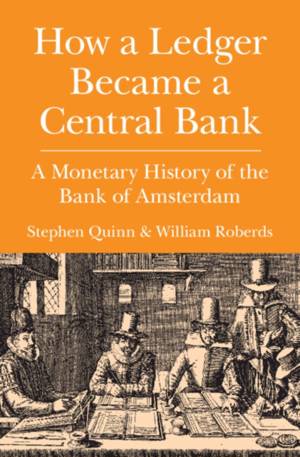
- Afhalen na 1 uur in een winkel met voorraad
- Gratis thuislevering in België vanaf € 30
- Ruim aanbod met 7 miljoen producten
- Afhalen na 1 uur in een winkel met voorraad
- Gratis thuislevering in België vanaf € 30
- Ruim aanbod met 7 miljoen producten
Zoeken
How a Ledger Became a Central Bank
A Monetary History of the Bank of Amsterdam
Stephen Quinn, William Roberds
€ 151,45
+ 302 punten
Uitvoering
Omschrijving
Before the US Federal Reserve and the Bank of England, the Bank of Amsterdam ('Bank') was a dominant central bank with a global impact on money and credit. How a Ledger Became a Central Bank draws on extensive archival data and rich secondary literature, to offer a new and detailed portrait of this historically significant institution. It describes how the Bank struggled to manage its money before hitting a modern solution: fiat money in combination with a repurchase facility and discretionary open market operations. It describes techniques the Bank used to monitor and stabilize money stock, and how foreign sovereigns could exploit the liquidity of the Bank for state finance. Closing with a discussion of commonalities of the Bank of Amsterdam with later central banks, including the Federal Reserve, this book has generated a great deal of excitement among scholars of central banking and the role of money in the macroeconomy.
Specificaties
Betrokkenen
- Auteur(s):
- Uitgeverij:
Inhoud
- Aantal bladzijden:
- 338
- Taal:
- Engels
- Reeks:
Eigenschappen
- Productcode (EAN):
- 9781108484275
- Verschijningsdatum:
- 30/11/2023
- Uitvoering:
- Hardcover
- Formaat:
- Genaaid
- Afmetingen:
- 152 mm x 229 mm
- Gewicht:
- 662 g

Alleen bij Standaard Boekhandel
+ 302 punten op je klantenkaart van Standaard Boekhandel
Beoordelingen
We publiceren alleen reviews die voldoen aan de voorwaarden voor reviews. Bekijk onze voorwaarden voor reviews.








